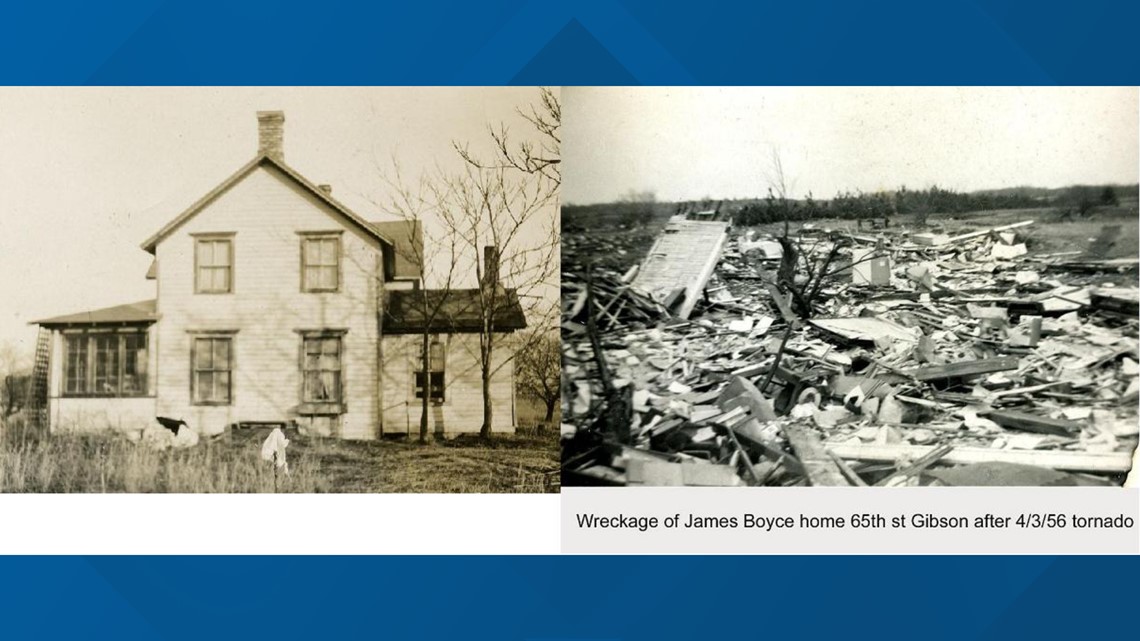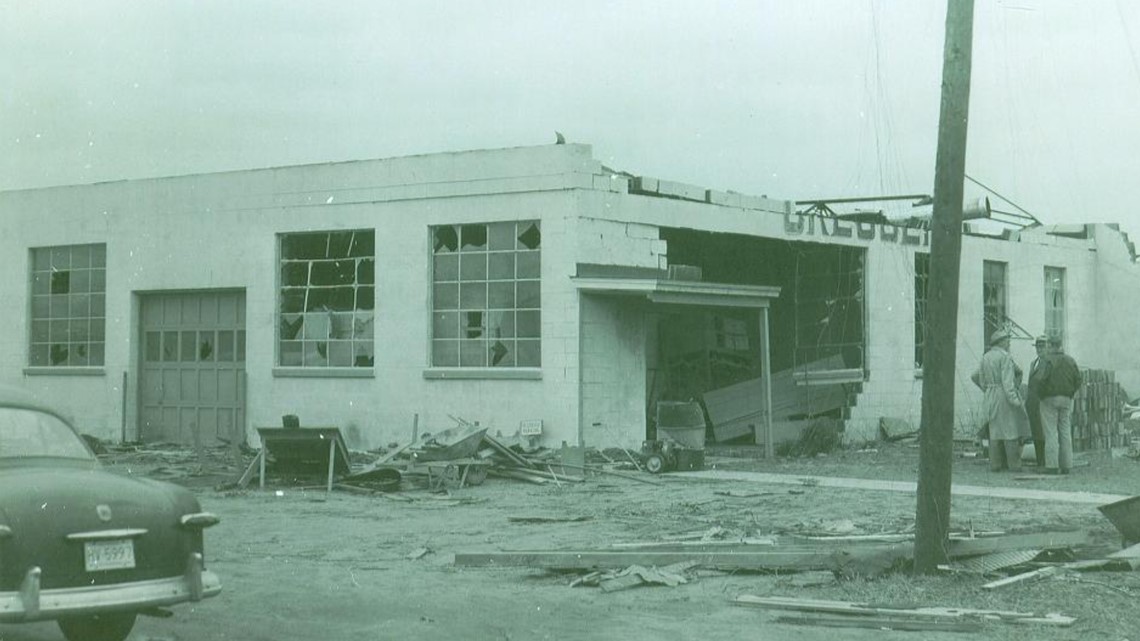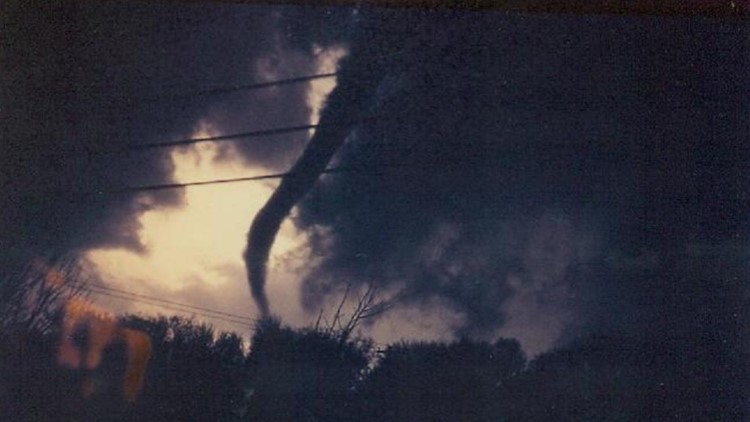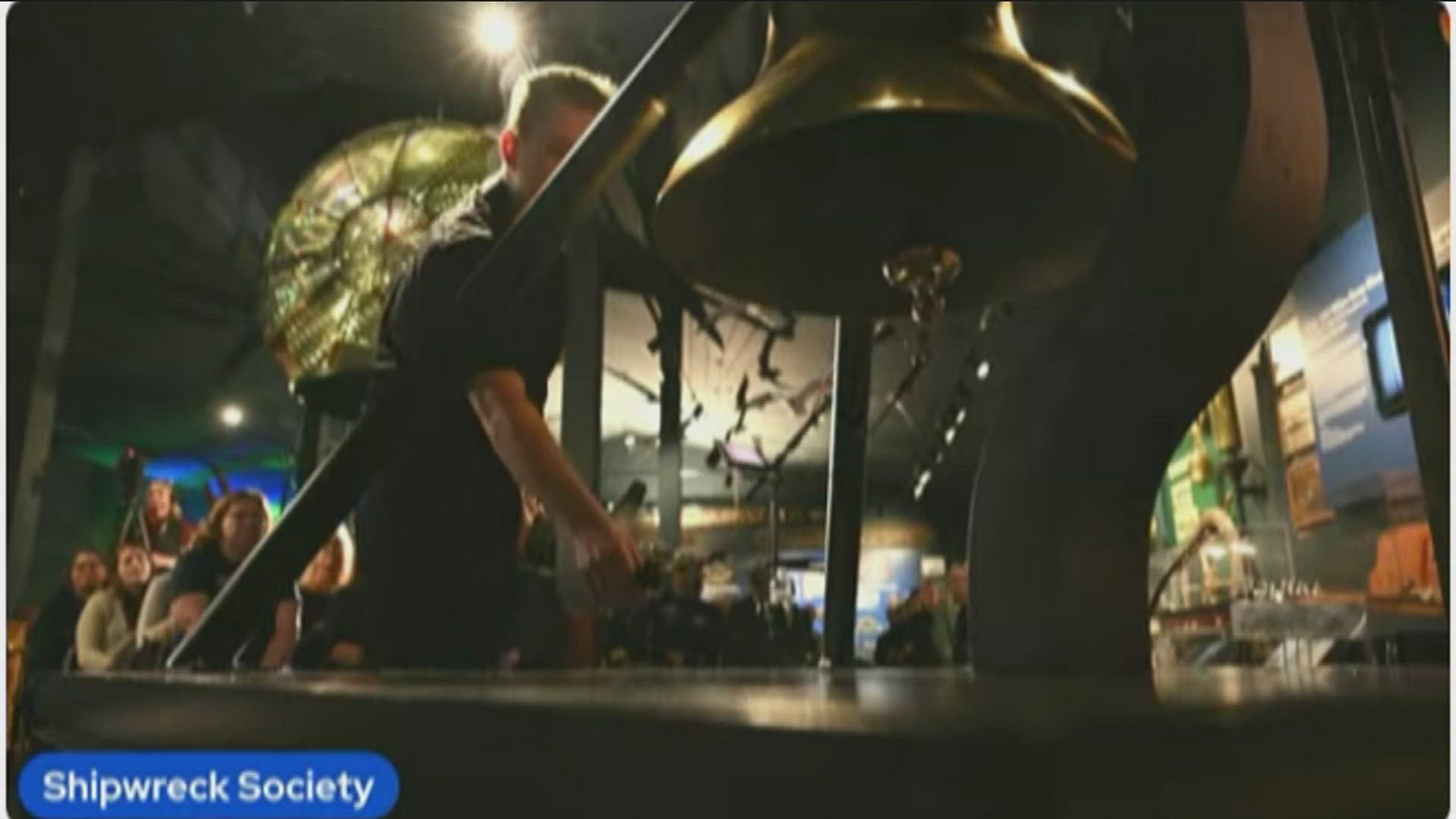KENT COUNTY, Mich. — Sixty eight years ago Wednesday, a devastating tornado outbreak across West Michigan killed 17 people, injured hundreds more and produced Michigan's last F-5 tornado.
April 3, 1956 was an unusually warm day with record highs in the upper 70s in Muskegon and Grand Rapids. Strong winds from the south brought these warm temperatures, along with high humidity.
But while Michiganders were enjoying the unseasonable weather, a cold front across Lake Michigan was creating a line of thunderstorms over Wisconsin and Illinois. These storms would eventually produce some of the most powerful tornadoes to ever touchdown in Michigan, but first they would unleash havoc across the lake.
By 1 p.m. that day, a tornado killed two people in Bancroft, Wisconsin as it left a path of destruction behind it. About an hour later, another tornado touched down in Berlin, Wisconsin, killing seven people and injuring 50 more.
With the lines of storms already producing deadly tornadoes, the U.S. Weather Bureau (now known as the National Weather Service) sounded the alarm for what may be on its way to Michigan.
The storms moved across the lake, eventually arriving on the coast of West Michigan in the late afternoon. Once they made it to the region, they immediately began producing tornadoes.
Over the course of three hours, from about 5:45 p.m. until about 8:30 p.m., at least four tornadoes would touch down, the strongest of which was an F-5 that would travel over 50 miles with a maximum estimated diameter of nearly a quarter mile.
The first tornado to touch down did so in Saugatuck, traveling nine miles to Holland. The F-4 tornado injured seven people and destroyed several buildings, including the historic Saugatuck Lighthouse.


Luckily, there were no fatalities caused by this initial tornado, but the deadly storms were far from over.
Just about 30 minutes after the first tornado, an F-5 touched down in Vriesland, a small village east of Zeeland. The tornado would travel over 50 miles from where it touched down before it lifted near Trufant, about after an hour after it began.


The F-5 would kill 17 people and injure another 340 people. This was one of the deadliest tornadoes in Michigan's history and the last time the state experienced an F-5.
Just as the second tornado was ending, a third tornado touched down near Bangor. This tornado reached a F-3 rating and lasted for nearly an hour. The F-3 resulted in 12 injuries and major damage to several structures across the 55 mile path the tornado followed.


These were the three largest tornadoes of the April 1956 outbreak:
Saugatuck to Holland
- Fatalities: 0
- Injuries: 7
- Path Length: 9 miles
- Maximum Width: 100 yards
- Rating: F4
- Time: 5:45 to 6 p.m.
Vriesland to Trufant
- Fatalities: 17
- Injuries: 340
- Path Length: 52 miles
- Maximum Width: 400 yards
- Rating: F5
- Time: 6:30 to 7:30 p.m.
Bangor to Lowell
- Fatalities: 0
- Injuries: 12
- Path Length: 55 miles
- Maximum Width: 150 yards
- Rating: F3
- Time: 7:15 to 8:30 p.m.
The National Weather Service provided accounts of each of these tornadoes, which can be found here.
Filmmakers Blake Naftel and Ernie Ostuno worked with the National Weather Service in Grand Rapids to produce a documentary of the deadly storms on the 50th anniversary of the events. They combined forensic meteorology with documentary storytelling to create the 21-minute production. You can view that here:
►Make it easy to keep up to date with more stories like this. Download the 13 ON YOUR SIDE app now.
Have a news tip? Email news@13onyourside.com, visit our Facebook page or Twitter. Subscribe to our YouTube channel.
Watch 13 ON YOUR SIDE for free on Roku, Amazon Fire TV Stick, and on your phone.



